Haji M. Furqan
Flexible Physical Layer Security for Joint Data and Pilots in Future Wireless Networks
Oct 22, 2021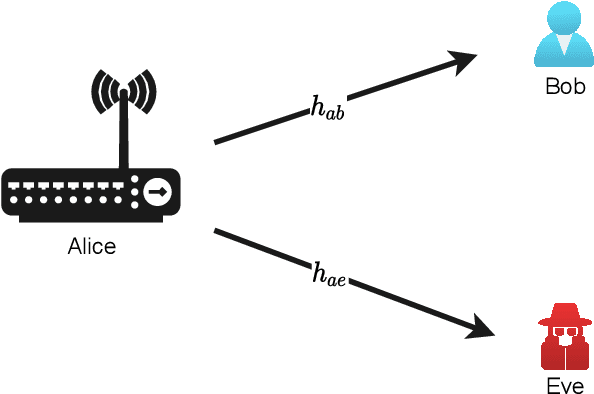
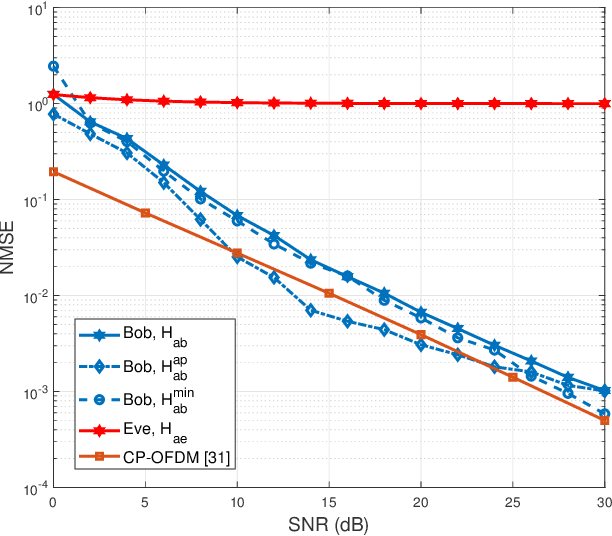


Abstract:In this work, novel physical layer security (PLS) schemes are proposed for orthogonal frequency-division multiplexing (OFDM) to secure both data and pilots. The majority of previous studies focus on only securing the data without considering the security of the pilots used for channel estimation. However, the leakage of channel state information (CSI) from a legitimate node to an eavesdropper allows the latter to acquire knowledge about the channel of the legitimate nodes. To this end, we propose adaptive and flexible PLS algorithms which can 1) secure data, 2) secure pilots, and 3) jointly secure both data and pilots. Particularly, minimum-phase all-pass channel decomposition is exploited, where the proposed algorithms use the all-pass component to provide security without harming the performance of the legitimate user. In the analysis for data security, we evaluated the secrecy under correlated and uncorrelated eavesdropping channels via closed-form bit error rate (BER) formulas. For pilot security, we analyzed the normalized mean squared error (NMSE) performance of the estimated channel. The simulation results along with theoretical analysis demonstrate that the proposed algorithms can effectively enhance the communication secrecy of the overall system.
Cyclic Prefix (CP) Jamming Against Eavesdropping Relays in OFDM Systems
Oct 18, 2021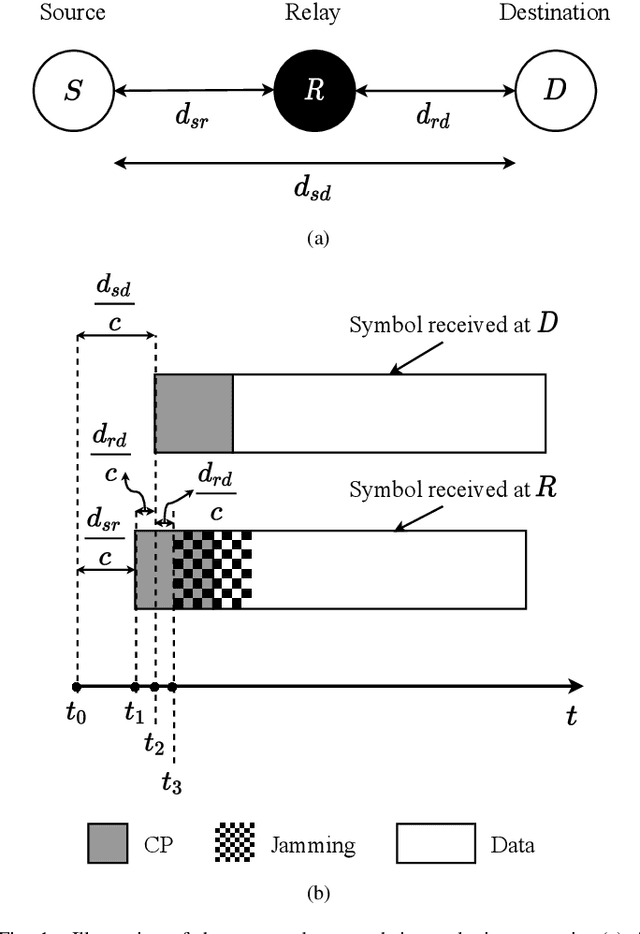
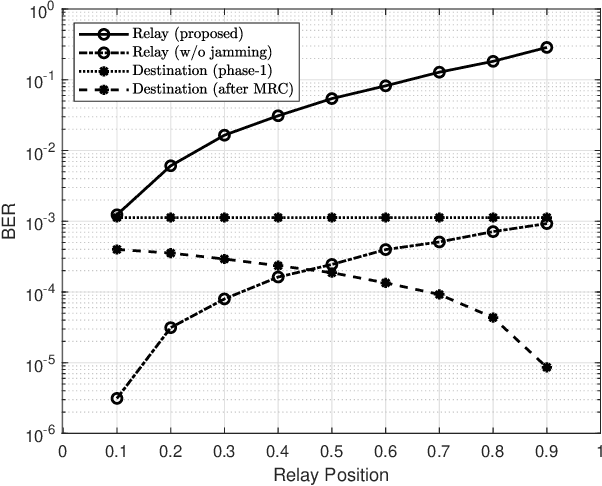
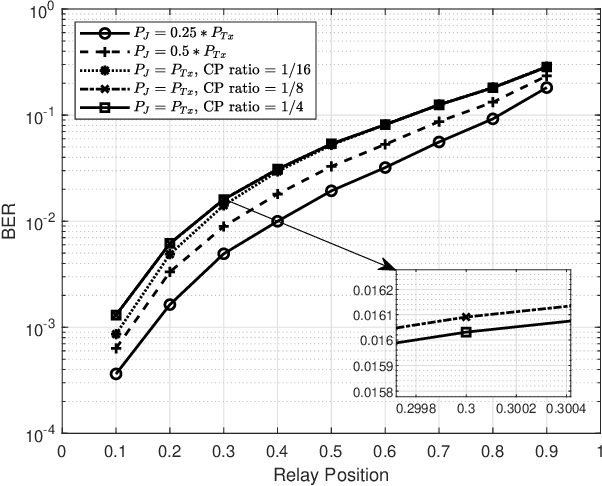
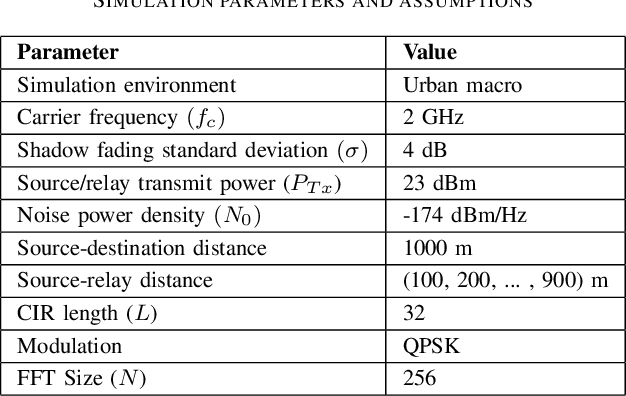
Abstract:Cooperative communication has been widely used to provide spatial diversity benefits for low-end user equipments, especially in ad hoc and wireless sensor networks. However, the lack of strong authentication mechanisms in these networks leaves them prone to eavesdropping relays. In this paper, we propose a secure orthogonal frequency division multiplexing (OFDM) transmission scheme, where the destination node transmits a jamming signal over the cyclic prefix (CP) duration of the received signal. Simulation results verify that as long as at least a part of the jamming signal falls to the actual data portion of the eavesdropping relay, it spreads through all the data symbols due to the fast Fourier transformation (FFT) operation, resulting in degraded interception at the eavesdropper.
Subcarrier Number and Indices-Based KeyGeneration for Future Wireless Networks
Sep 30, 2021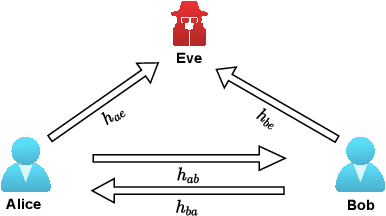

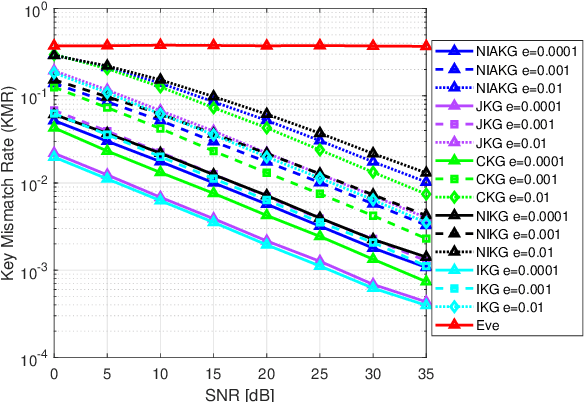
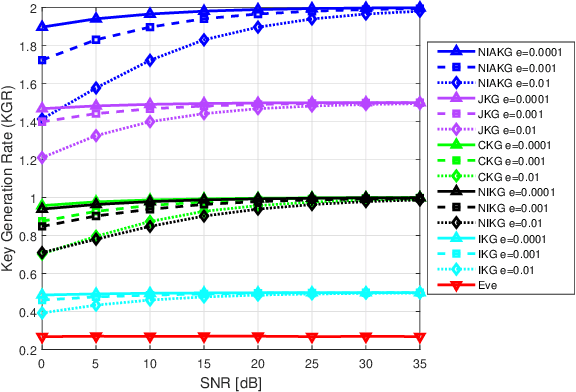
Abstract:Physical layer key generation from the wireless channel is an emerging area of interest to provide confidentiality and authentication. One of the main challenges in this domain is to increase the length of the secret key while maintaining its randomness and uniformity. In this work, new dimensions for wireless channel-based key generation are proposed for orthogonal frequency division multiplexing (OFDM) systems. The novel perspective of the proposed work lies in the generation of key bits not only from the magnitudes of OFDM subchannels as it has conventionally been done but also from the number and positions of those subchannels whose channel gains are above the mean of the respective subblock. The effectiveness of the proposed algorithms is evaluated in terms of key generation rate and key mismatch rate. Additionally, a statistical test suite offered by the National Institute of Standards and Technology is used to evaluate the randomness of the generated key bits. It is shown in the simulation results that the involvement of the proposed dimensions can double the key generation rate compared to conventional algorithms.
 Add to Chrome
Add to Chrome Add to Firefox
Add to Firefox Add to Edge
Add to Edge